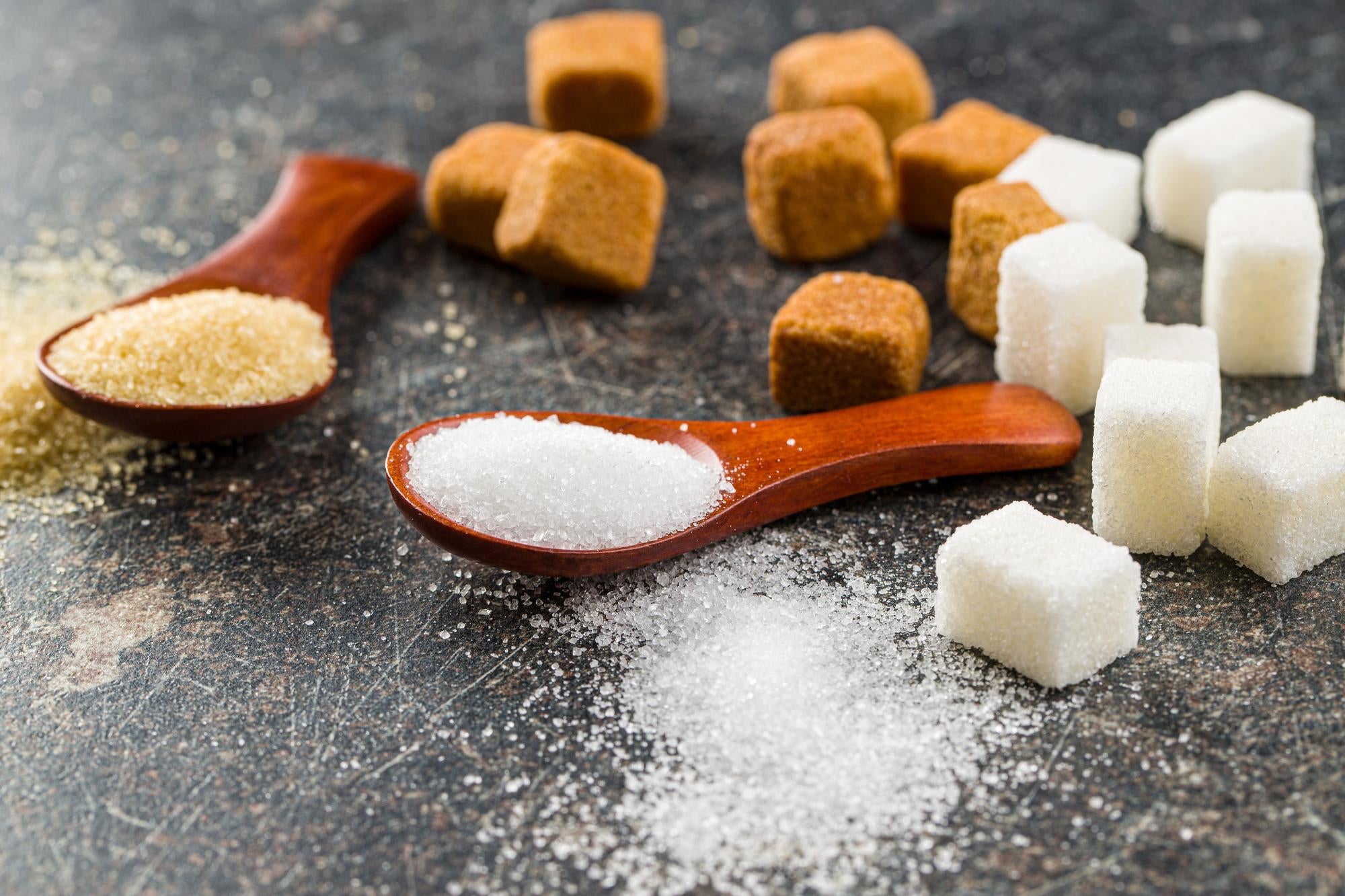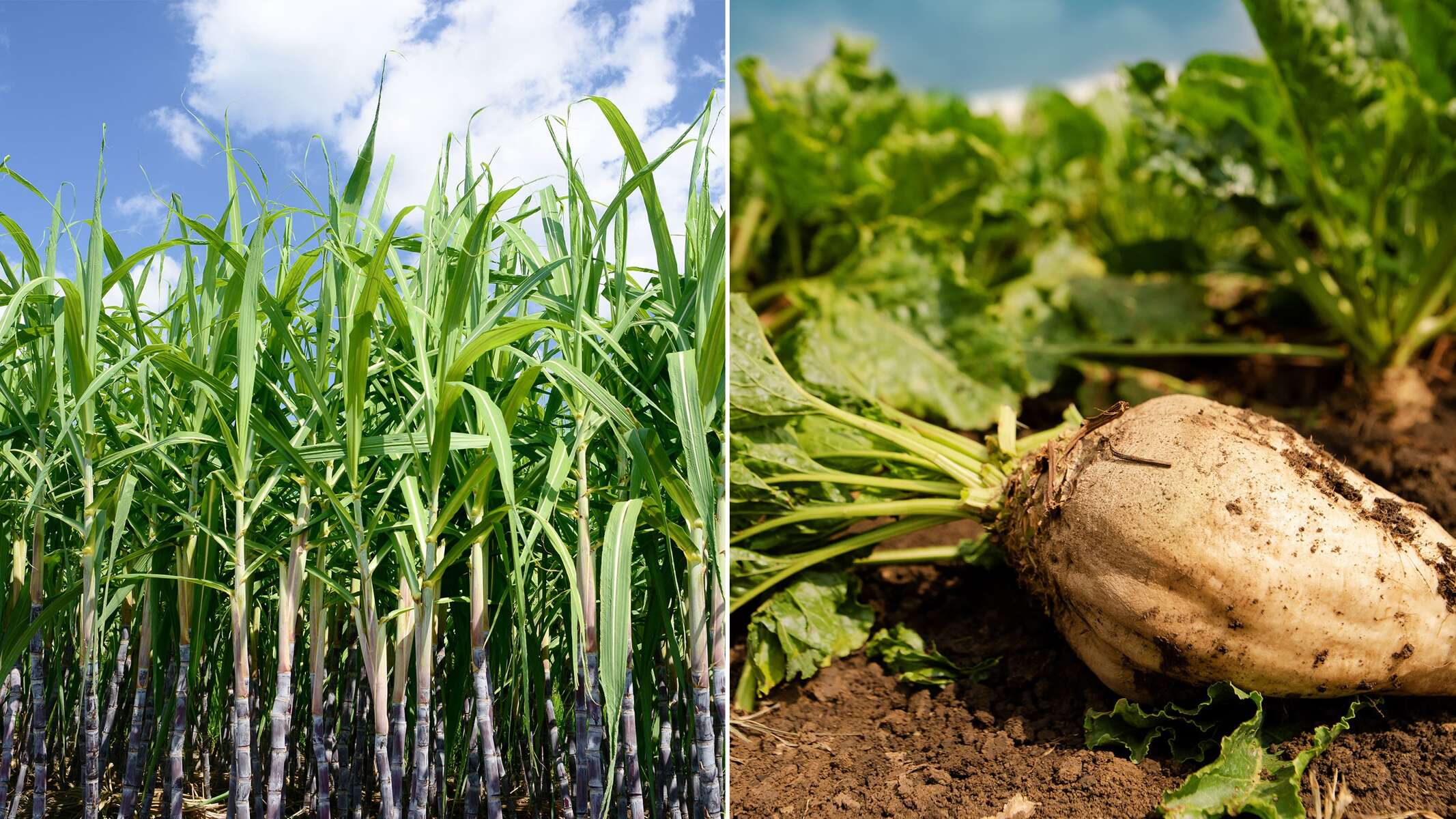Beginners’ guide to Sugar beet vs sugar cane production insights
Wiki Article
Everything About Sugar Beet Vs Sugar Cane: Which One Uses Greater Benefits and Utilizes?
The contrast in between sugar beet and sugar cane presents a nuanced exploration of their particular advantages and applications. Each plant has distinctive dietary profiles and expanding conditions that affect their use in numerous markets. As customer choices change towards healthier choices, the significance of these two resources of sugar becomes increasingly significant. Comprehending their differences might expose insights right into which might ultimately serve better in a changing market landscape. What factors will shape this recurring discussion?Review of Sugar Beet and Sugar Cane
Sugar beet and sugar cane are 2 key resources of sugar, each with distinctive characteristics and advantages. Sugar beet, a root crop mainly grown in temperate environments, is recognized for its high sucrose web content, which can vary from 15% to 20%. This plant is commonly refined right into granulated sugar, molasses, and other by-products. Its cultivation permits a much shorter expanding period and much less dependence on exotic climates.In contrast, sugar cane thrives in warmer, tropical areas and is commonly related to for its fibrous stalks, which can yield 10% to 15% sucrose. The handling of sugar cane not just creates sugar but also causes items like rum and ethanol, making it functional. Both plants add significantly to the worldwide sugar market, with their unique expanding problems and processing approaches affecting their agricultural and financial value. Ultimately, the selection between sugar beet and sugar cane frequently depends upon regional environments and market demands.
Nutritional Profiles: Sugar Beet Vs Sugar Cane
The nutritional profiles of sugar beet and sugar cane reveal significant distinctions in their nutrient compositions. Sugar beet tends to provide a greater focus of nutrients, while sugar cane primarily provides energy in the type of carbohydrates. Additionally, the glycemic index of these 2 sources differs, impacting their effects on blood sugar degrees.Nutrient Composition Comparison
When contrasting the nutrient structure of sugar beet and sugar cane, distinctive differences arise that can influence nutritional options. Sugar beetroots are known for their higher fiber web content, offering about 2 grams of fiber per 100 grams, while sugar cane has very little fiber (Sugar beet vs sugar cane). Concerning vitamins, sugar beetroots supply a variety of B vitamins, specifically folate, which supports mobile health, whereas sugar cane consists of fewer vitamins generally. In addition, sugar beets boast a greater mineral web content, including potassium and magnesium, crucial for different physical features. Sugar cane primarily offers carbs, specifically sucrose, but lacks the nutrient thickness found in sugar beets. These distinctions highlight the nutritional benefits of sugar beets contrasted to sugar cane in a well balanced diet regimen
Glycemic Index Distinctions
How do sugar beets and sugar cane vary in their glycemic index, and what effects does this have for individuals monitoring their blood sugar level levels? Sugar beets normally have a reduced glycemic index (GI) contrasted to sugar cane, which means they trigger a slower and extra steady increase in blood glucose levels. This distinction is especially crucial for individuals with diabetes mellitus or those worried concerning blood sugar level monitoring. A reduced GI food can help maintain steadier power levels and minimize the threat of insulin spikes. While both resources are generally made up of sucrose, the varying fiber and nutrient material in sugar beetroots may add to their reduced GI, making them a possibly far better alternative for health-conscious customers.Expanding Conditions and Geographic Circulation
Although both sugar beet and sugar cane function as important resources of sugar, their growing conditions and geographic distribution vary considerably. Sugar cane thrives in exotic and subtropical environments, needing warm temperature levels, bountiful sunshine, and substantial rains. It is mostly grown in countries such as Brazil, India, and China, where these environmental factors are ideal. Sugar beet vs sugar cane. In comparison, sugar beet likes temperate environments, growing in cooler areas with well-drained dirt. Major manufacturers of sugar beet consist of the United States, Russia, and numerous European countries, where the growing period lines up with cooler temperaturesThe differences in climate needs cause varying farming methods; sugar cane is typically grown as a seasonal plant, while sugar beet is generally grown every year. This geographical distinction not just influences local farming economic climates but likewise shapes regional practices connected to sugar production and handling. Comprehending these aspects is crucial for examining the benefits and applications of each source.
Ecological Effect of Sugar Beet and Sugar Cane Manufacturing
While both sugar beet and sugar cane add significantly to international sugar production, their ecological influences differ substantially. Sugar cane cultivation commonly demands big stretches of land and water, leading to deforestation and environment loss in some regions. Furthermore, the usage of fertilizers and chemicals in sugar cane farming can result in soil deterioration and water air pollution. his response Conversely, sugar beet is normally expanded in cooler climates and requires much less water, which might minimize the strain on regional water sources. However, intensive farming techniques connected with sugar beet can additionally bring about soil erosion and nutrient exhaustion. The processing of both crops produces waste, however sugar cane has a greater possibility for by-products, such as bioenergy, which can alleviate some ecological influences. Inevitably, the sustainability of each plant largely depends on farming practices and regional management strategies utilized throughout the production cycle.
Handling Approaches and Performance
Handling methods for sugar beet and sugar cane differ markedly, impacting overall efficiency and yield. Sugar beets undergo a process that consists of cleaning, cutting, and removing juice via diffusion or pushing. The juice is after that detoxified, focused, and taken shape, resulting in granulated sugar. This method is generally efficient, with a high sugar extraction price.On the other hand, sugar cane handling entails squashing the cane to essence juice, adhered to by explanation and dissipation. The juice is after that boiled to produce sugar crystals. While both methods work, sugar cane handling can be extra labor-intensive and time-consuming due to the bigger range of operations and the need for more extensive tools.
Sugar beet processing frequently results in a greater sugar web content per lot compared to sugar cane, making it an extra effective alternative in specific areas. Overall, the selection of processing approach impacts not just the return but additionally the economic viability of sugar manufacturing.
Applications in the Food Industry
In the food sector, sugar beet and sugar cane serve distinctive roles in sweetener manufacturing. Each resource offers one-of-a-kind features that influence their cooking applications, from baked products to drinks. Understanding these distinctions can aid suppliers and chefs in picking the most ideal active ingredient for their requirements.Sugar Production Distinctions
Although both sugar beet and sugar cane act as essential sources for sugar production, their additional hints applications in the food market differ significantly. Sugar cane is largely connected with generating raw sugar and molasses, which are widely utilized in drinks, confections, and baked goods. Its juice is also fermented to produce rum. Alternatively, sugar beet is primarily refined right into refined sugar, which is favored in the production of granulated sugar and different other sugar. The removal process for sugar beet is much more uncomplicated, allowing for higher yields of white sugar. Furthermore, sugar beet's versatility enables the development of alternate sugar, such as beet syrup. These distinctions highlight the distinctive roles each source plays in satisfying the diverse requirements of the food market.Culinary Utilizes Contrast
Cooking applications of sugar beet and sugar cane disclose distinctive preferences among chefs and food producers. Sugar cane, commonly regarded as the typical sugar, is preferred in a selection of products, including syrups, molasses, and beverages like rum. Its all-natural taste complements treats, sauces, and sauces. Alternatively, sugar beet, utilized mainly in granulated sugar type, is often integrated into baked goods, candies, and refined foods. Its neutral taste account enables it to mix effortlessly right into different recipes. Furthermore, sugar beet is acquiring traction in natural and non-GMO markets, interesting health-conscious customers. Eventually, the selection in between sugar beet and sugar cane depends upon certain culinary applications, taste choices, and market patterns within the food market.Health And Wellness Considerations and Consumer Preferences
A growing variety of customers are increasingly aware of the health effects connected with sugar sources, resulting in an eager passion in the benefits of sugar beet versus sugar cane. Both sugar sources have distinctive nutritional accounts that might affect consumer choices. Sugar beetroots have a tendency to include a little a lot more fiber and necessary nutrients, which can attract health-conscious people. Conversely, sugar cane is often regarded as a much more all-natural and less refined choice, potentially drawing in those seeking natural or raw products.Moreover, the climbing popularity of different sweeteners has actually prompted customers to scrutinize standard sugars a lot more carefully. Awareness recommended you read of extreme sugar intake's health threats, such as obesity and diabetic issues, has actually fueled a need for openness concerning the beginnings and handling methods of sugar. Inevitably, specific preferences remain to form the debate between sugar beet and sugar cane, showing a more comprehensive trend towards much healthier consuming routines and notified consumerism
Often Asked Inquiries
What Are the Historical Uses of Sugar Beet and Sugar Cane?
Historically, sugar beet and sugar cane have actually functioned as main resources of sugar. Sugar cane, grown for centuries in tropical regions, offered sweeteners, while sugar beet arised in Europe throughout the 18th century, boosting local sugar manufacturing.

Exactly How Do Sugar Beet and Cane Affect Resident Economies?
Sugar beet and sugar cane substantially influence neighborhood economic situations via work production, farming performance, and profession. Their growing promotes rural advancement, supports local companies, and creates tax obligation earnings, inevitably boosting neighborhood sustainability and economic resilience.Are There Any Kind Of Social Importance Differences Between Sugar Beet and Cane?
Social relevance ranges sugar beet and sugar cane. Sugar cane typically represents exotic heritage and typical methods, while sugar beet is related to agricultural innovation and automation, showing different local identifications and historical contexts in their manufacturing.What Are the Key Vermin Affecting Sugar Beet and Sugar Cane?
The primary parasites impacting sugar beet consist of aphids and root maggots, while sugar cane encounters dangers from borers and planthoppers. Both crops call for careful monitoring to reduce damages and guarantee healthy and balanced returns.How Do Environment Changes Effect Sugar Beet and Sugar Cane Farming?
Climate adjustments significantly influence sugar beet and sugar cane cultivation by changing development conditions, moving bug populations, and affecting water schedule. These factors can minimize returns and affect general farming sustainability in influenced areas.Report this wiki page